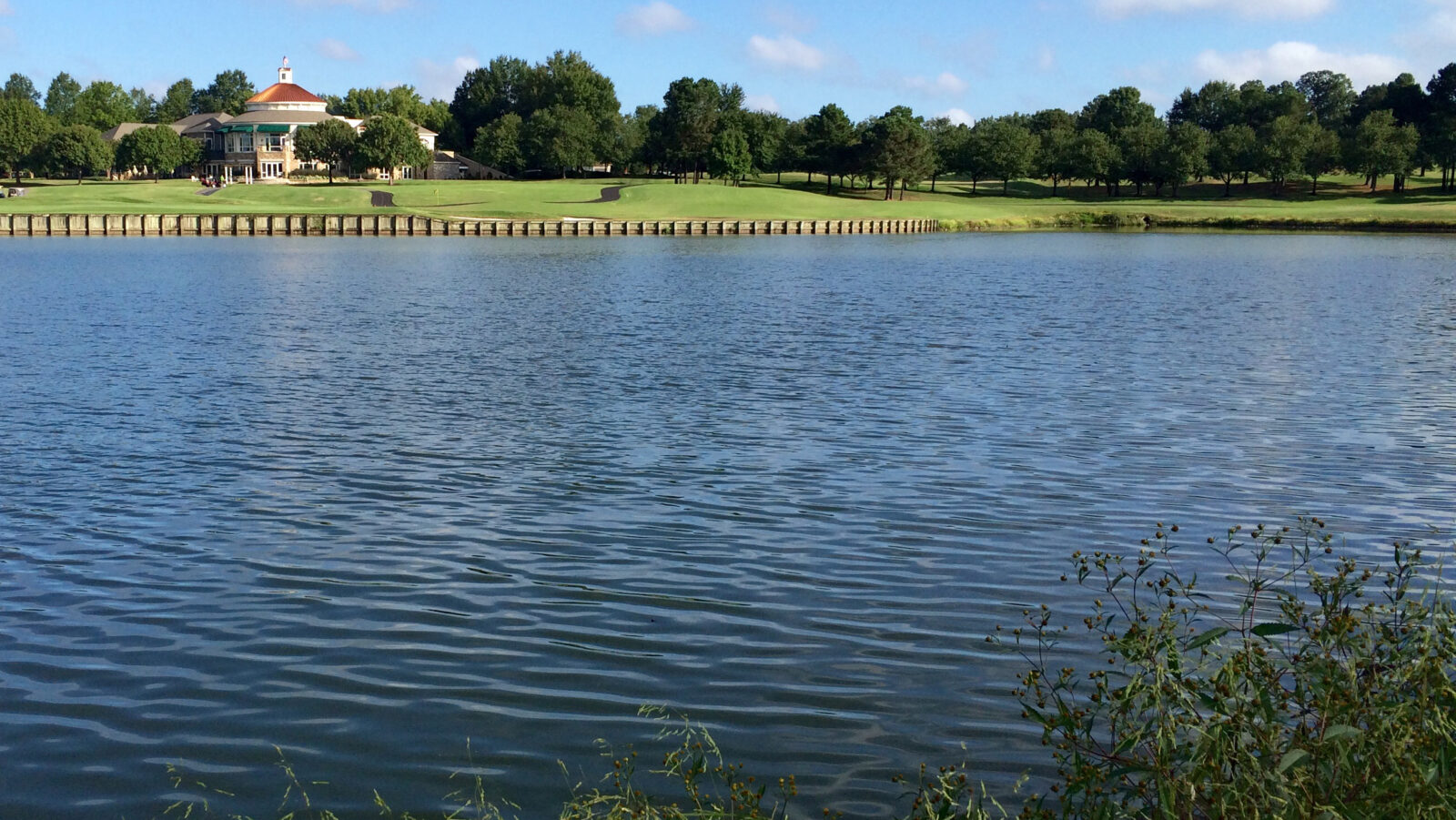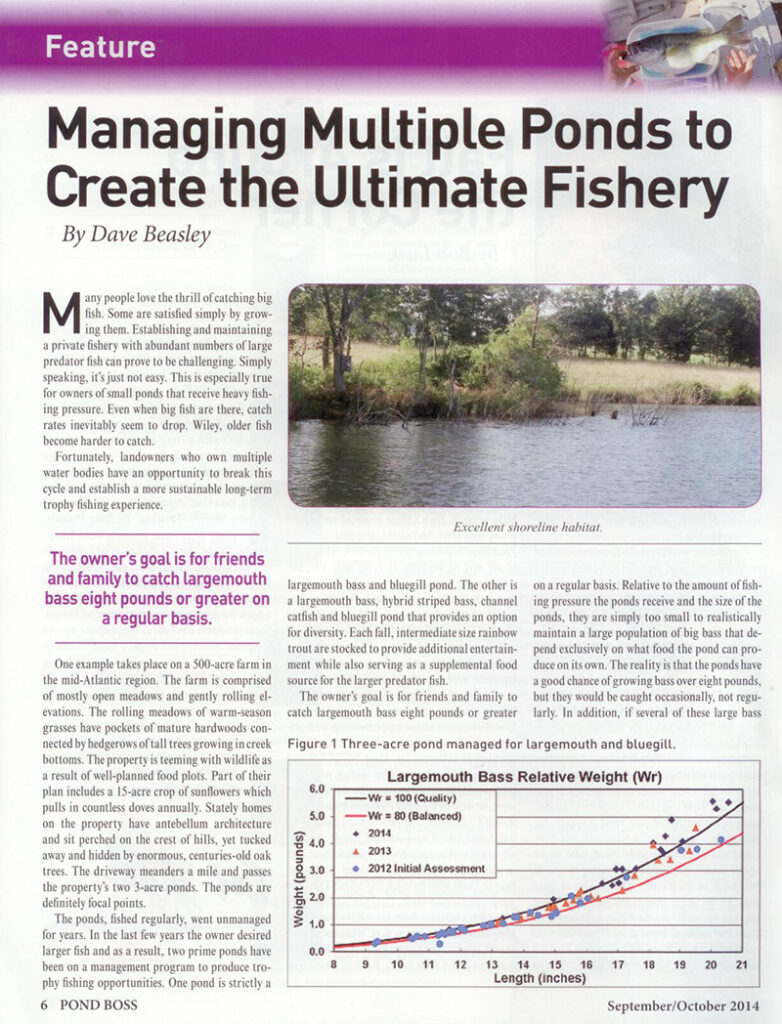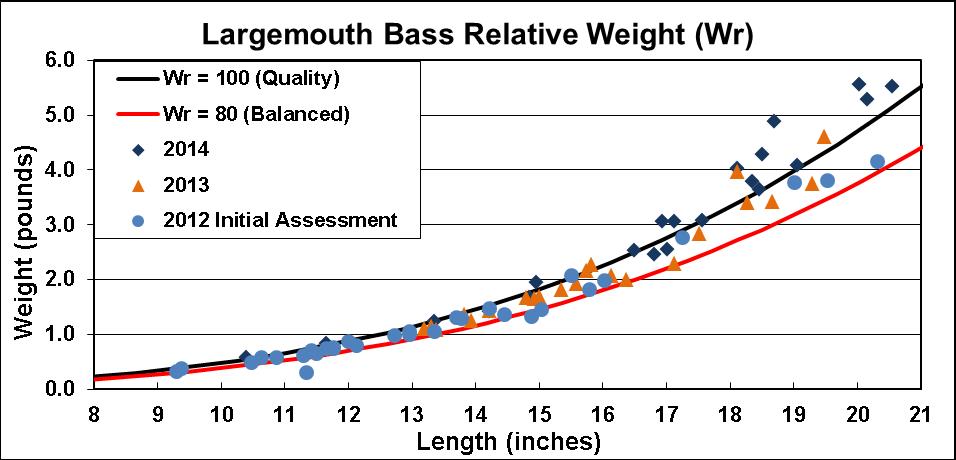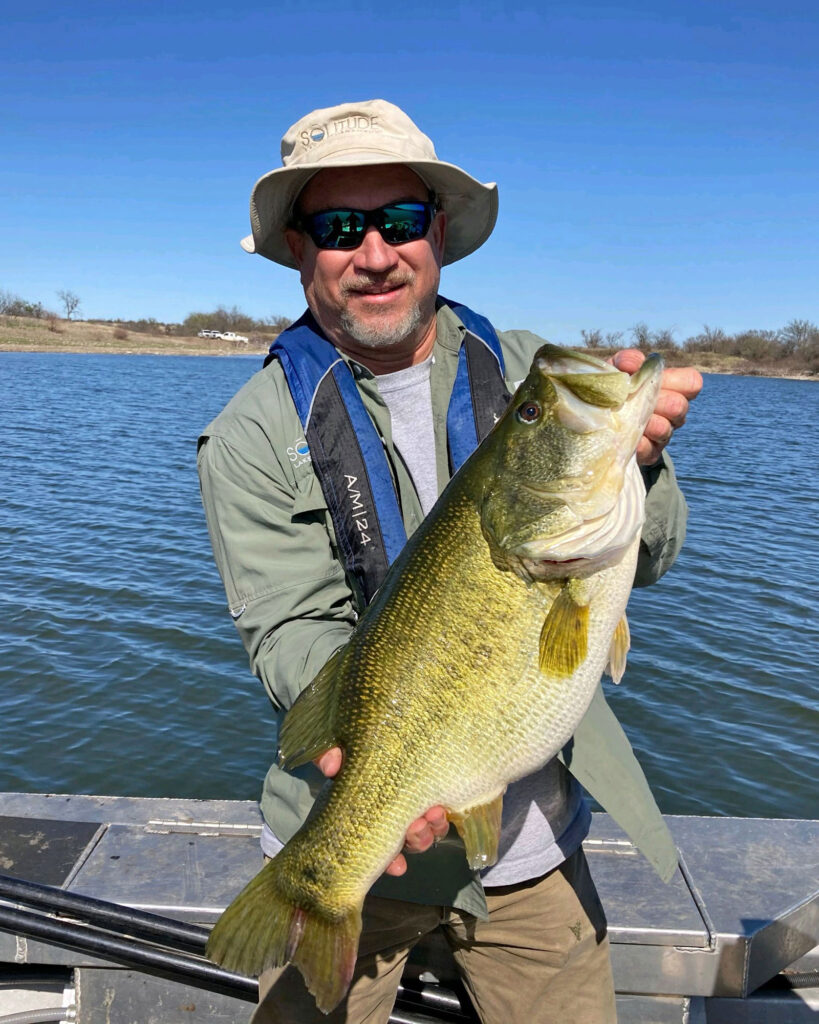

The satisfaction of catching big fish is something that many of us desire. Unfortunately, establishing and maintaining a private fishery with an abundant number of large predator fish can prove to be challenging. This is especially true for owners of small ponds that receive heavy fishing pressure. Throw in the occasional novice fisherman and odds diminish even further. Fortunately, landowners who own multiple waterbodies have an opportunity to break this cycle and establish a more sustainable long-term trophy fishing experience.
An example takes place on a 500 acre farm in the mid-Atlantic region. The farm has an open layout and comprises mostly of open meadows and an elevation that is continually changing. The rolling meadows of warm-season grasses have pockets of mature hardwoods connected by hedgerows of tall trees growing in creek bottoms. The property is teaming with wildlife as result of several food plots including a 15-acre crop of sunflowers that pulls in countless doves annually. The houses on the property all have antebellum architecture and are perched up on the crest of the hills, yet tucked away and hidden by enormous oak trees that have been around for centuries. The driveway is over a mile long and takes you past the properties two three-acre ponds that are the center of the attention.
The ponds, which are fished regularly, went unmanaged for years. Just in the last few years the owner desired larger fish and as result, these two ponds have been on a management program to produce trophy fishing opportunities. One pond is strictly a largemouth bass and bluegill pond. The other is a largemouth bass, hybrid striped bass, channel catfish and bluegill pond that provides an option for some diversity. Each fall, intermediate size rainbow trout are stocked to provide additional entertainment while also serving as a supplemental food source for the larger predator fish.
The owner’s goal is for friends and family to catch largemouth bass that are eight pounds or greater on a regular basis. Relative to the amount of fishing pressure the ponds receive and the size of the ponds, they are simply too small to realistically maintain a large population big bass. The reality is that the ponds have a good chance of growing bass over eight pounds, but they would be caught occasionally, not regularly. In addition, if several of these large bass were to die annually, the ponds will not be able to maintain a population of eight-pound bass over an extended period of time.
With only two 3-acre ponds, it is not very realistic for the landowner to reach his goal of establishing and maintaining high catch rates of bass over eight pounds. To overcome this challenge, either the goals need to be modified or the owner needed more water.
Fisheries Management Plan
Many times, coming up with more water is not practical. Fortunately for this landowner, an adjacent property containing three ponds totaling 15 acres (six acres, seven acres and two acres) was up for sale. These ponds were perfect to help meet the landowner’s goals and it was an easy decision to purchase the property.
Now with five ponds totaling 21 acres, the goals became increasingly more obtainable. With three and a half times more water, the fisheries management plan was revised to maximize the benefit of this additional water. It was decided to keep the two 3-acre ponds as the primary fishing ponds based on their central proximity, and utilize the additional 15 acres to produce trophy size fish that could then be transferred to the three-acre ponds as needed. This strategy would allow the owner to create a pair of three-acre ponds that contain two to three times the number of trophy fish than they would normally. Most importantly, it would provide an avenue to replace mature trophy fish nearly immediately as needed, rather than waiting years.

With the long-term vision set and the additional water secured, it was time to begin making this dream a reality. Since the two 3-acre ponds were under management for three years, they were already on track to produce big fish, and did not require any adjustments to the management strategy. They already had the proper predator/prey species and ratios, good fish cover, ideal water quality, bottom diffused aeration, and were on a fertilizing and feeding program.
As seen in Figure 1, the largemouth bass population in the bass/bluegill pond has responded well to the current management strategies. Although the larger bass are not of the desired size (8+ pounds), they are trending in the correct direction at an acceptable pace based on the amount of time under management.
The more diverse, three-acre pond is also doing well. The catfish stocked two years prior that averaged a half pound each are now pushing 15 pounds. The predator/prey ratio is in outstanding condition as all predators in the pond have an excessive amount of available forage. The hybrid striped bass were recently stocked and will grow quickly by feeding on high quality floating fish food. Largemouth bass numbers are limited (approximately 100 fish), but the ones present are growing quickly. This three-acre pond, with a diverse number of predators, is going through a transition period where young predator fish are establishing, but based on electrofishing results the pond is trending well.
The primary focus now is to get the 15 acres of water producing fish that can be used to supplement the fishing ponds. These new ponds are located in a natural, overgrown, productive setting that appears to be capable of providing forage fish with plenty of habitat to maintain a dense population as long as predator numbers are limited. To assess the condition of the fifteen acres, all three new ponds were electrofished. While electrofishing, a six pound bass and two four-pound bass were collected and transferred to the original three-acre ponds, but overall, the fifteen acres of water did not have good fishing and contained small bass along with undesired fish such as black crappie and green sunfish.
With a first hand look at the 15 acres of water, the decision was made to reset the 15 acres by applying rotenone to eradicate the fish. A month or so following the reset, bluegill, redear sunfish, fathead minnows and golden shiners were stocked to establish as a forage base for predator growth. Using automatic feeders, the forage fish are being fed a high quality fish feed to increase the ponds carrying capacity. In addition to feeding, the ponds are also fertilized to increase the productivity.
Once the forage fish are established in the ponds, a low number of female largemouth bass will be stocked in the spring of 2015. This should result in a population of bass that do not reproduce. Although an all-female bass population is a desired goal, realistically we need to plan for the worst and assume that male largemouth bass may find their way into the system.

As the bass reach the desired size, they will be collected by both angling and electrofishing and will be transferred to the fishing ponds. If needed during the fish removal process, the water level of the ponds can be lowered. As time goes on, additional female bass will be added to the fifteen acres to establish additional generations of bass.
Based on this plan, it will take four to five years following the initial reset of the fifteen acres before the majority of the bass reach a six to eight pound range. Once this occurs, the process of transferring fish to the two 3-acre ponds will begin.
Regardless of your goals, utilizing multiple waterbodies to improve the fishing in a primary waterbody is a great way to boost catch rates and increase the odds of catching quality fish even during a short fishing outing. Growing predator fish and then transferring them is one great way to utilize additional waterbodies, but is not the only available strategy. In addition to growing predator fish, pond owners have the option to produce forage fish that can then be stocked into the primary fishing ponds. The main downside to growing forage fish with the additional ponds is the challenge of harvesting and transporting the forage fish. If the ponds are designed for this purpose it can be a simple process, but many times this is not the case.









